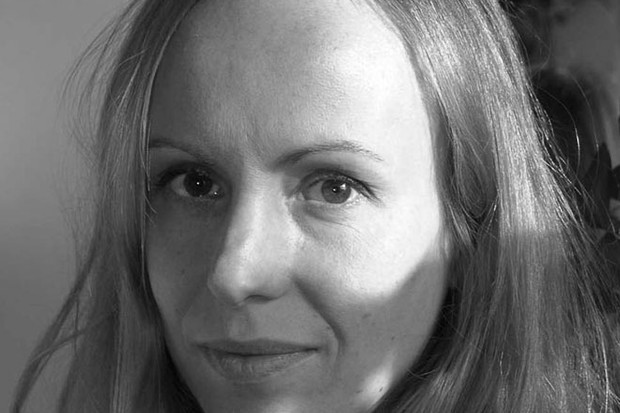Alanté Kavaïté • Director
“Nothing is ever simple and straightforward”
- Lithuanian director living in Paris Alanté Kavaïté decodes her second feature, The Summer of Sangaile, unveiled in competition at the Sundance Film Festival

A world première at the Sundance Film Festival and a selection at the Berlinale Panorama: The Summer of Sangaile [+see also:
film review
trailer
interview: Alanté Kavaïté
film profile], the second feature by Alanté Kavaïté has taken off on the right foot. Meeting with the director to talk about a film produced by Parisian company Les Films d'Antoine, in co-production with Lithuanian Fralita Films and Dutch Viking Film, and sold internationally by Films Distribution.
Cineuropa: Where did the idea for The Summer of Sangaile come from?
Alanté Kavaïté: I loved the cinema workshops with young people and I really enjoyed working with them and, above all, filming them. I was really inspired by their receptiveness and by their ability to express themselves with a force that one no longer has as an adult. That led me to reflect on my own adolescence in Lithuania. As for the main theme, aerobatics, it´s a metaphor because I wanted to make a movie about someone in the midst of growing up, someone who´s trying to find themselves and who´s going to become that person. But, aerobatics demands real self control and that´s exactly what Sangaile, my main character, lacks.
The film is very much centred on feelings and sensations
I wanted it to be really sensory, for it to touch on emotions more so than narration. Emotions are what dominate adolescence: we´re still children and yet already adults. That´s also why the love scenes have that sensory aspect: goose bumps, discovering the other´s body. There´s also a feeling of vertigo when Sangaile gets on the plane for the first time: when she has to endure the gravitational forces. But I didn’t want to make yet another film where we see a teen suffering from some kind of harsh reality. I sought calm and lightness and the understanding that difficulties and self-destructive urges are a key part of growing up.
What about the romantic relationship between your two female characters?
The same story with a boy and a girl wouldn’t have been perceived as I wanted it to be. In this case, I play on the fact that the other person is a mirror. Sangaile, the girl from Vilnius, comes from a privileged background: she has everything, but she does nothing with it. Aisté, has to do part time work during the summer, but at the same time, she has everything. I wanted to play on contrasts, on the bodies’ symmetry. Sangaile seriously lacks love and self-confidence. Aisté literally takes her into her hands, like a doll, to dress her up. Sangaile is also kind of a tomboy and I enjoyed seeking out a world totally opposed to hers in order to rightfully, via that world, lead her to where she must go. It’s the meeting of a sweet and powdered world that will lead Sangaile towards the world of planes. Because nothing is ever simple and straightforward.
What were your intentions for direction?
Just like Sangaile wants to fly and is unable to do so, the biggest challenge of the film was to not have only des plans fixes. That was really difficult and the chief-operator even treated me like a terrorist (laughs). Then there’s a contrast between the images fixes and the aerial shots for which I used a drone-mounted camera that was at exactly the altitude between Sangaile in the sun and the plane making the aerobatic figures one hundred metres high. Generally, once I began writing, the issue of space was very important. I wrote the film with scenery and with some slightly radical direction preferences, rather than through dialogue.
How did you manage filming the aerobatic scenes?
The aerobatics star, Jurgis Kairys basically offered us a week of commitment. That was a blessing in view of the film’s very limited budget. Obviously, we couldn’t use a heavy camera on the drone-mounted camera, so it was a HD camera, a photo camera. It was difficult to handle because with the slightest breeze you end up filming four metres right or left. In total, at one point, we were filming with 12 cameras, three of which were big cinema cameras, plus the photo cameras. What’s more, the gravitational forces that one endures in an aerobatics plane are so intense that an ordinary person, like Julija in the film, can’t do more than two 11-minute scenes per day. So it was maximum risk-taking: we jumped in and we filmed. One loop, two loops, three loops: she held on! Thank goodness! Because I had no plan B.
Was producing the film complicated?
The cultural exception and the protection of the French language are fantastic: I’m all for. But when you live in France like me and you want to make a movie in another language, there are very few sources of financing available. Fortunately, the new Lithuanian Film Centre supported us via an advance on takings. But the film was made with a very small budget, less than a million euro, which meant that the hardcore team had to cover various posts. But as long as the aesthetic ambition of the project isn’t harmed, you can do that.
Did you enjoy reading this article? Please subscribe to our newsletter to receive more stories like this directly in your inbox.















